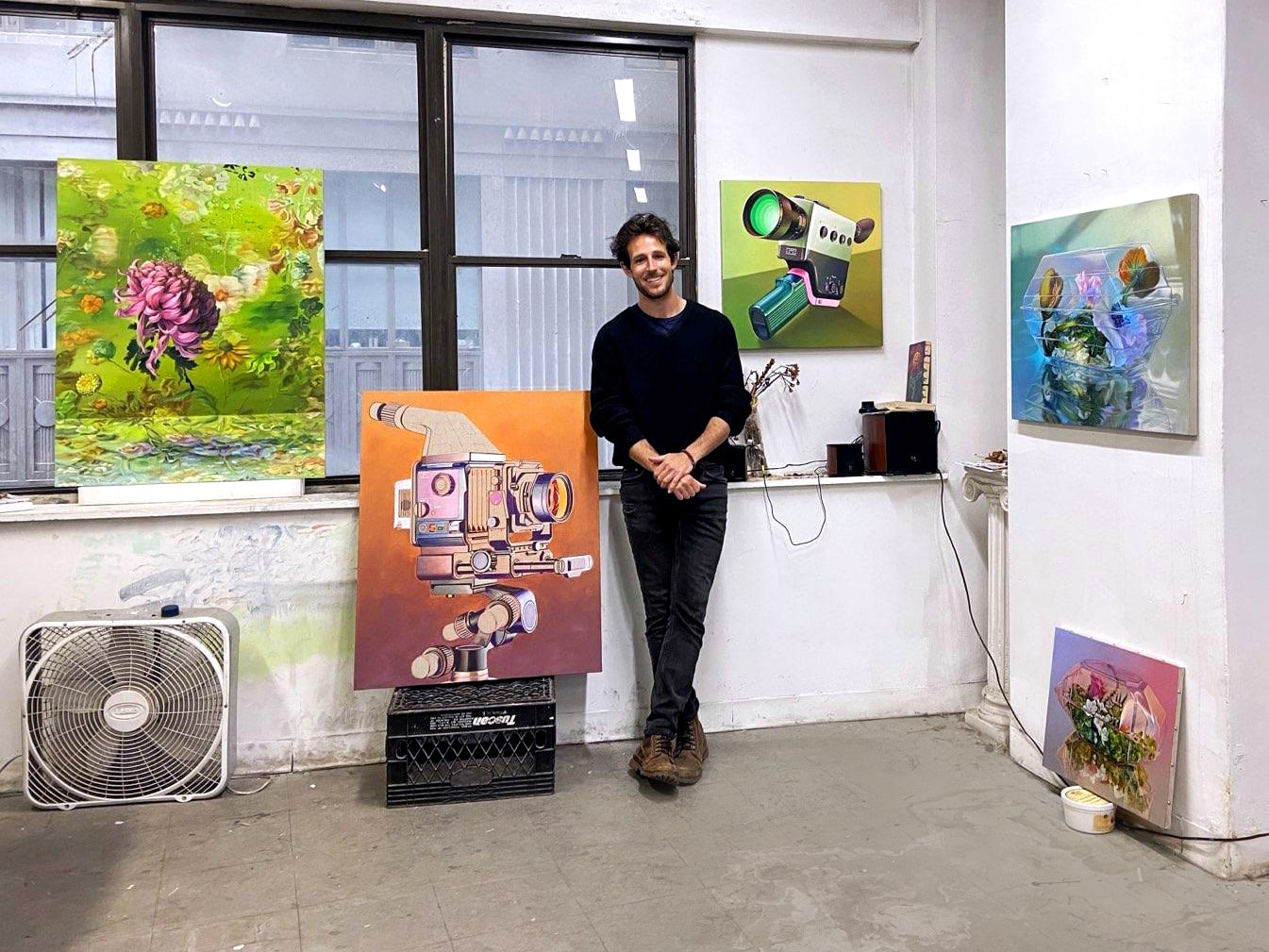Chason Matthams‘s exhibition “Glimpse” fills the walls of Magenta Plains with a series of canvases ranging from intimate to large-scale, demonstrating the painter’s meticulous gaze on a handful of unassuming objects. Hyper-realistic and vibrant in carefully-selected colors are a series of cameras, corsages, and falling confetti, their depiction transforming the viewer’s perception of everyday items into an experience worth contemplating. While taking in Matthams’s seemingly invisible brushstrokes and pristine eye for light and hue, one can’t help but feel that these objects carry an emotional weight.
Whitewall caught up with the artist to learn more about the show, open in New York now through October 22.
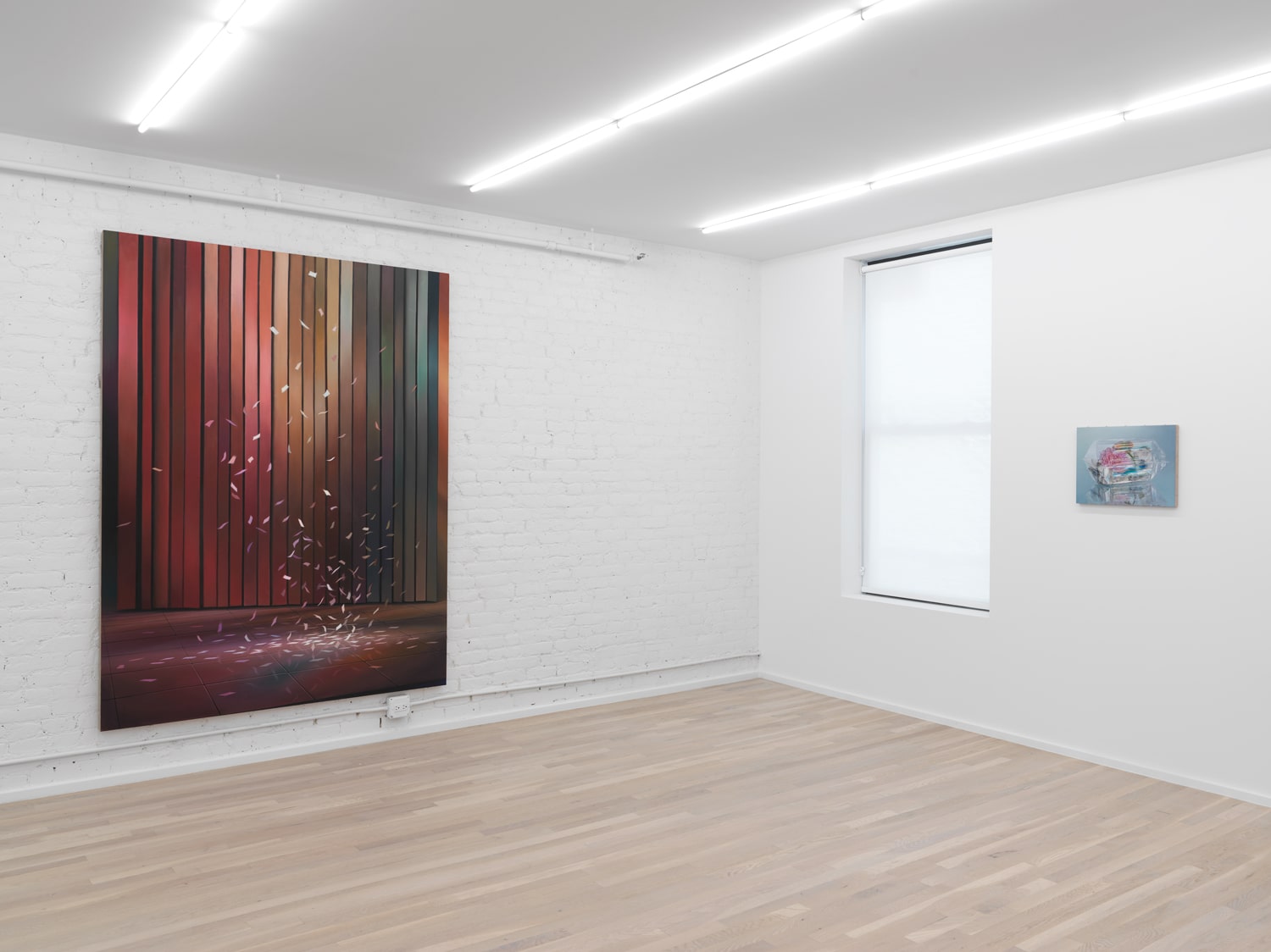
Installation view of Chason Matthams’s “Glimpse,” courtesy of the artist and Magenta Plains.
WHITEWALL: What was the starting point for your upcoming show, “Glimpse?”
CHASON MATTHAMS: Often after finishing a large body of work I will copy a historical painting with the hope that its ethos carries through to my next body of work. This always results in the bizarre sensation of feeling like you are having a conversation with a kindred spirit long dead and perhaps nudges my river of thought from the last few years in a particular direction. For better or worse, I never have a starting point for a show though. For me, the idea has to emerge and slowly form behind my back. Anytime I sit around thinking and come up with an idea, it just falls flat or I end up fighting it while making the actual paintings.
WW: What are the themes and inspiration behind this show?
CM: This grouping of works is the most limited arrangement I’ve come to. There are three subjects: cameras, flowers and one painting of confetti. The connective thread is that they are all attempts at catching some sort of ephemeral moment in the most static and still way possible. For me, each painting also has the feeling of being both celebratory and mournful, depending on the particular day I walk into the studio.
WW: What is it about cameras and corsages that are intriguing for you to depict?
CM: I keep returning to the cameras and corsages because every time I paint them they work anew as excellent prompts that reveal where I am at. I find it much like returning to a favorite book that you have read throughout your life. Each time you project onto it differently or a theme emerges that you completely passed over the decade before. In a way, repainting the same subjects and rereading a beloved book have the same spirit to them.
Here, I am thinking about Giorgio Morandi, Maureen Gallace, or Peter Dreher who painted an ordinary empty glass over 5,000 times in his life. Each camera can be seen as a metaphor for how I am processing the world in that particular moment. In the same way, each arrangement of flowers marks the way I might be celebrating or mourning the events of that particular time. To me, both indicate this tragic, pathetic, beautiful thing we have to do—which is look out at our vast, bottomless, ever-shifting environment and squeeze it through the narrow tubes of our body in order to momentarily navigate it.
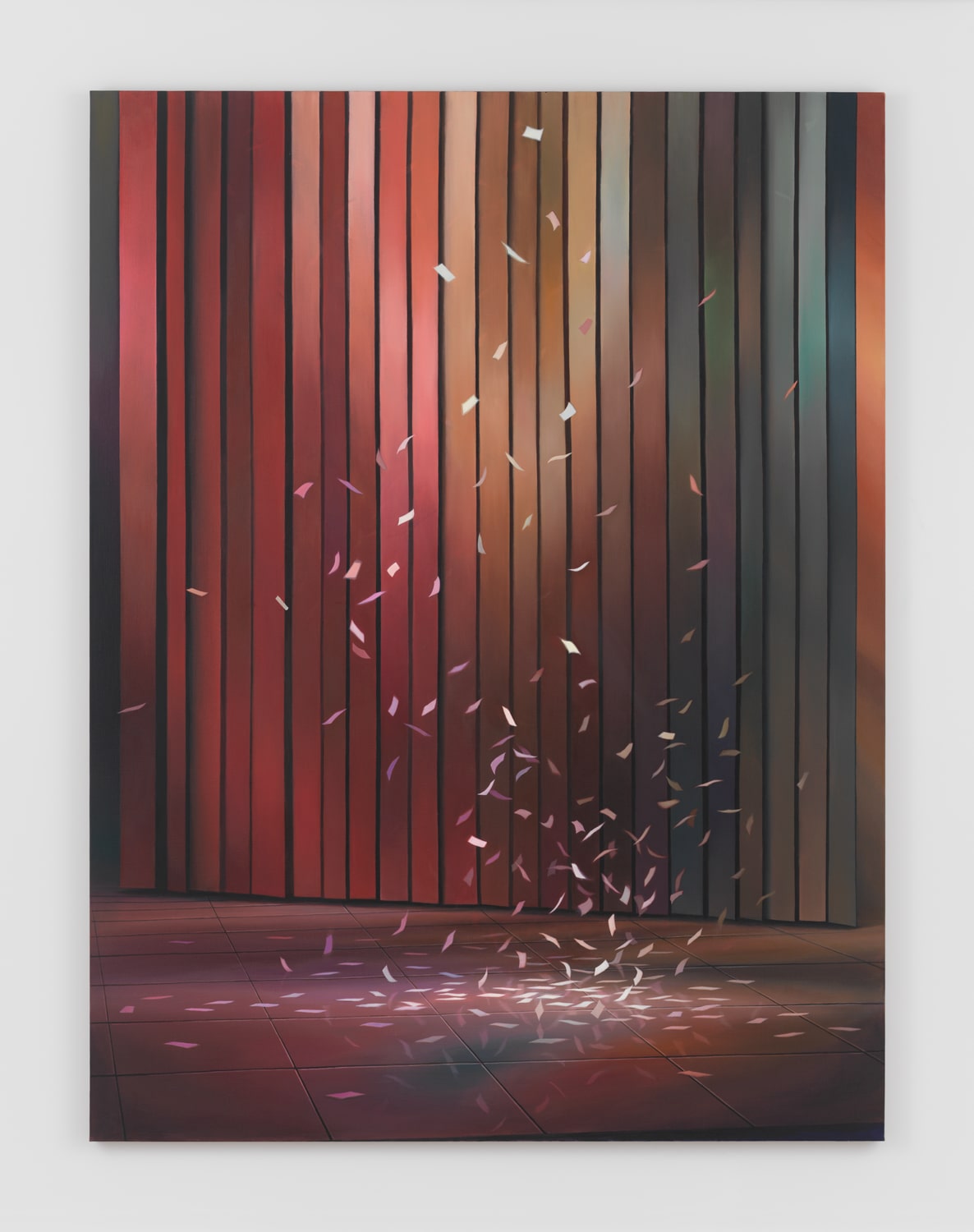
Chason Matthams, “Confetti,” 2021, Oil on linen, 82 x 62 inches; courtesy of the artist and Magenta Plains.
WW: Confetti is similar in theme to your other included works, but the scene is very different. What’s the role of Confetti within a collection primarily composed of works depicting cameras and corsages?
CM: To be honest, even though the painting was started years ago, the confetti is too new a subject for me to entirely wrap my head around. The biggest difference for me is the open space it creates. The corsages and cameras have a real sense of confinement to them; they are literal boxes. Where even if the confetti is confined to a stage, there is a greater sense of movement to it.
Maybe the confetti is an event marking the occurrence or end of something, allowing for an emotional release and a way of moving on? Though without an audience, its emptiness could suggest the way so many parts of life unceremoniously pass by us or fade away without acknowledgement? While the corsages and cameras might be marking events we choose to focus on, maybe the confetti is more about feeling states that pass by too quickly or the memories we forget to hold onto? I’m looking forward to attempting the next iteration in order to work through some of these thoughts.
WW: How do your previous experiences working with Comedy Central and creating movie posters connect to your current works?
CM: I was a background artist working on a few animated shows, mainly “Jeff and Some Aliens”. The assignment there was to create an environment in which the dramas and calamity of the characters could unfold. In designing a character’s home, you would want to make it specific to them of course, but not too distracting as to take away from a character’s storyline. In a way, the paintings I am making do the same thing; they are specific yet empty enough for various narratives to play out.
For the posters and illustration work that I have done, you really are in service of the film or the writer, and the finished work should reflect their idea. In this way, the finished product is a depiction of a previously arrived at idea. This has been clarifying for me as I do not want my paintings to do that. I want the paintings to be totems that contain the history of an idea being grappled with, the product of an ongoing thought process. I am drawn to artworks that embody a way of being and doing, instead of illustrating an idea or agenda.
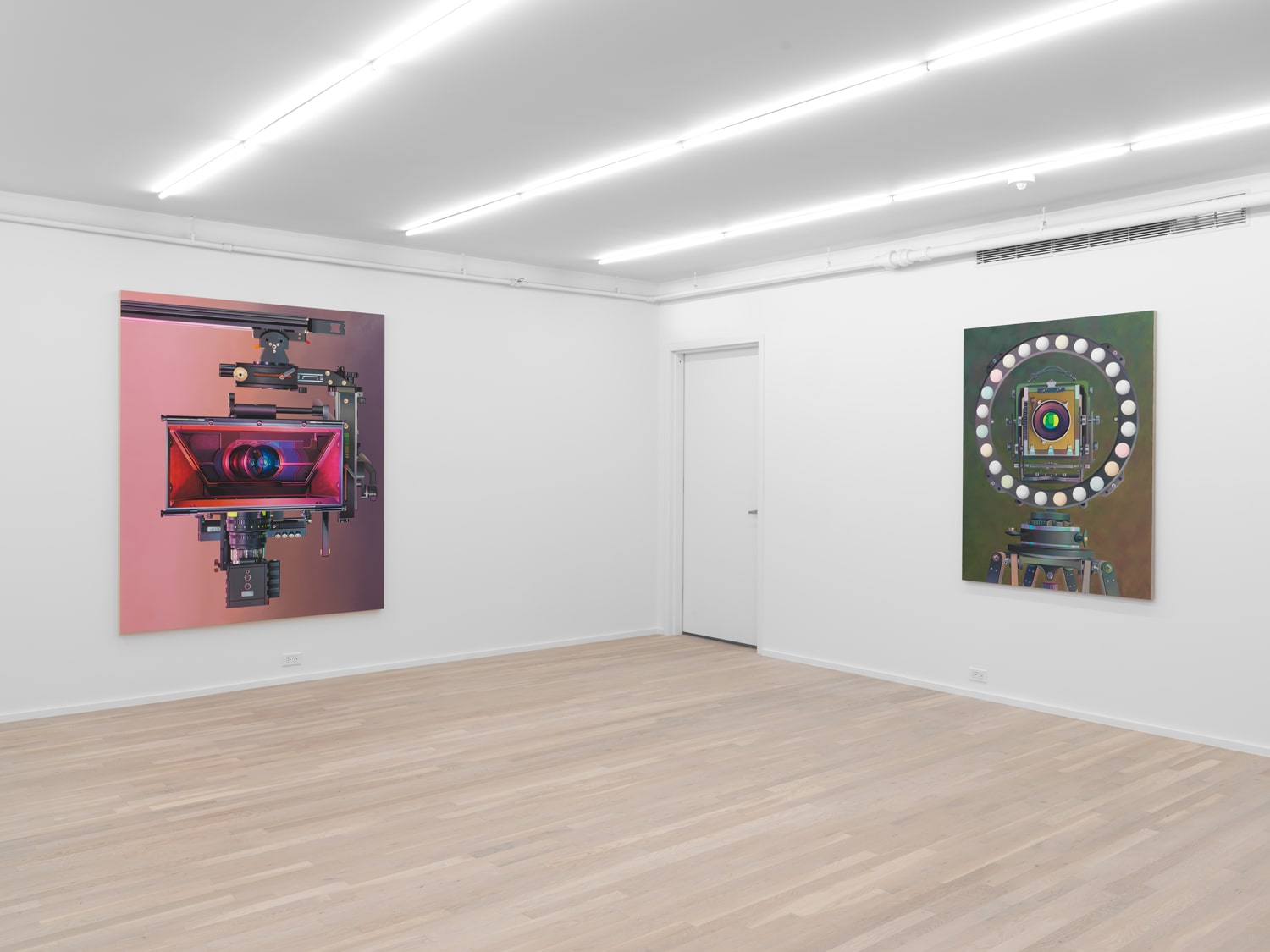
Installation view of Chason Matthams’s “Glimpse,” courtesy of the artist and Magenta Plains.
WW: So much of your work places a heavy emphasis on color choices. How do you utilize color to evoke the intended emotions and effects you’re aiming for?
CM: Color is a hell of a thing. I should probably only make grisaille paintings. The last show was actually called “A Hell for Rainbows”, the conceit being that “hell” for a rainbow would be taking away its full spectrum and forcing it into a specific palette. It is always wild to me that I can set out to make a hellish painting, but then you walk over to your tubes and pick up indigo instead of ultramarine as a way to cool down the warm pigments, and all of sudden hell is less hot and shifts into a warm, womb-like embrace. Color is squirrely in the paintings like that, too. Sometimes I walk into my studio and a camera is focused on the sun rising and other days it turns into the fires burning.
WW: Can you tell us about your studio? What’s a typical day like for you there?
CM: I am very routine-oriented. I like the stillness of repetition and the ripples in the water that are revealed because of it. For the sake of my tender little ego, I’ll go over a more ideal day rather than the ones interrupted by lethargic dread. For those days, you can replace 2-4 hours of working with your classic doom scrolling and pouring over images of trivial significance and momentary distraction, which you know, is also part of the “work”.
For almost ten years now, I wake up and edit a photograph I’ve taken in nature and post it on Facebook, of all places. I read a study that said even looking at a picture of nature has psychological benefits. Living in New York City, I hope that is true. After establishing that peace, I obliterate it by reading the news and responding to emails. Then it is time for meditation, 16 pull ups and a run or calisthenics to try and get it back.
I cherish being in a state of flow and try to create spaces for it all day, thus painting. Depending on the size, each painting takes between 2 weeks to 2 months, so while some days I’ll stretch or gesso a canvas, most days are straight painting. I don’t keep any comfortable chairs in the studio, so it is hard to “hang out” in there. I try not to do a lot of thinking in the studio either because that often leads to more thinking and less doing.
Music is better for flow states but at some point I burn out and need the distraction of a podcast or audiobook. I save my favorite album for the last hour of the night. Before leaving, I will take a picture of the painting so I can compare it to the previous day to track my choices. Every night I come home and do 16 more pull-ups and eat a slice of carrot cake. I feel very fortunate to have days like this.
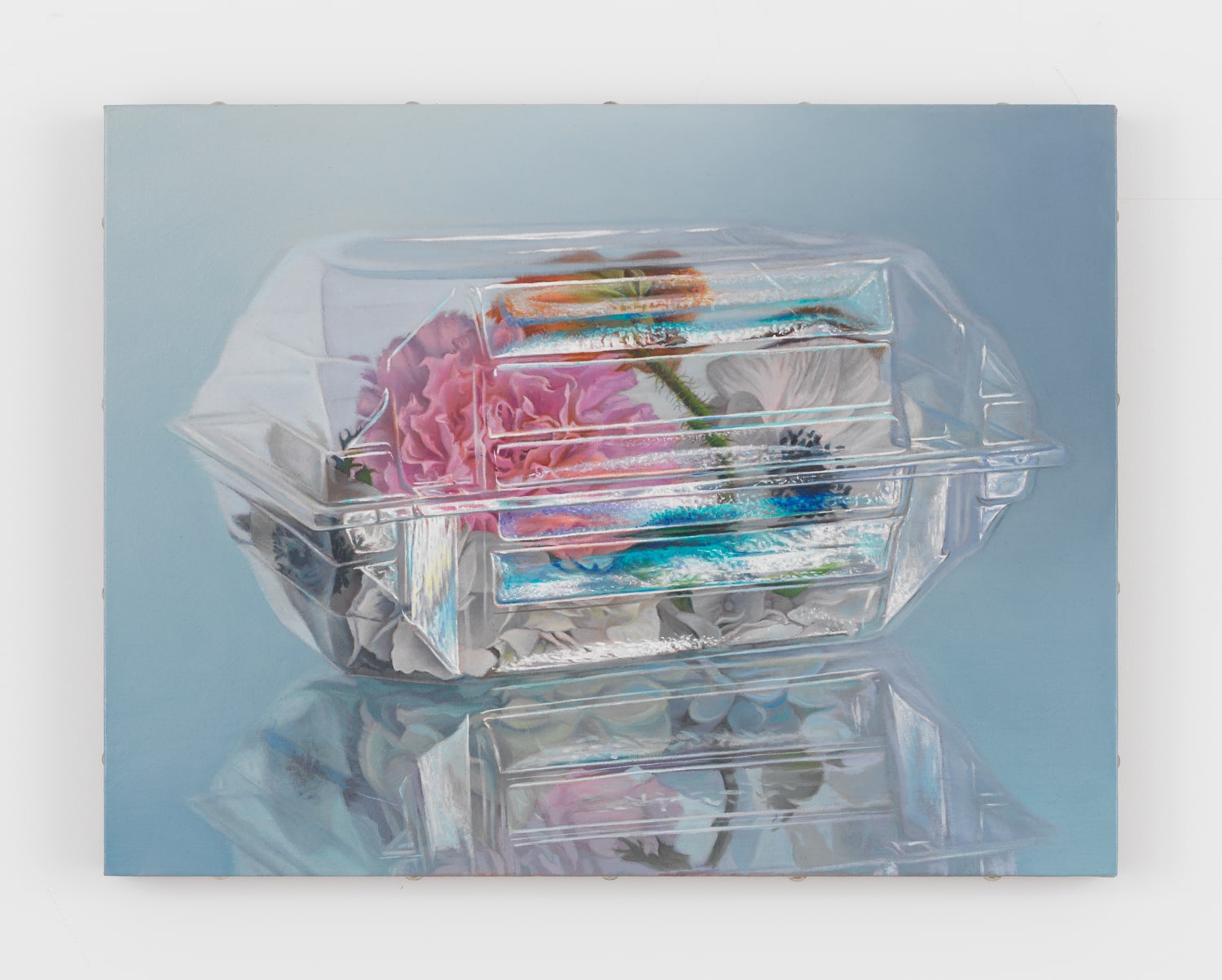
Chason Matthams, “Corsage (blue),” 2021, Oil on linen over panel, 14 x 18 inches; courtesy of the artist and Magenta Plains.
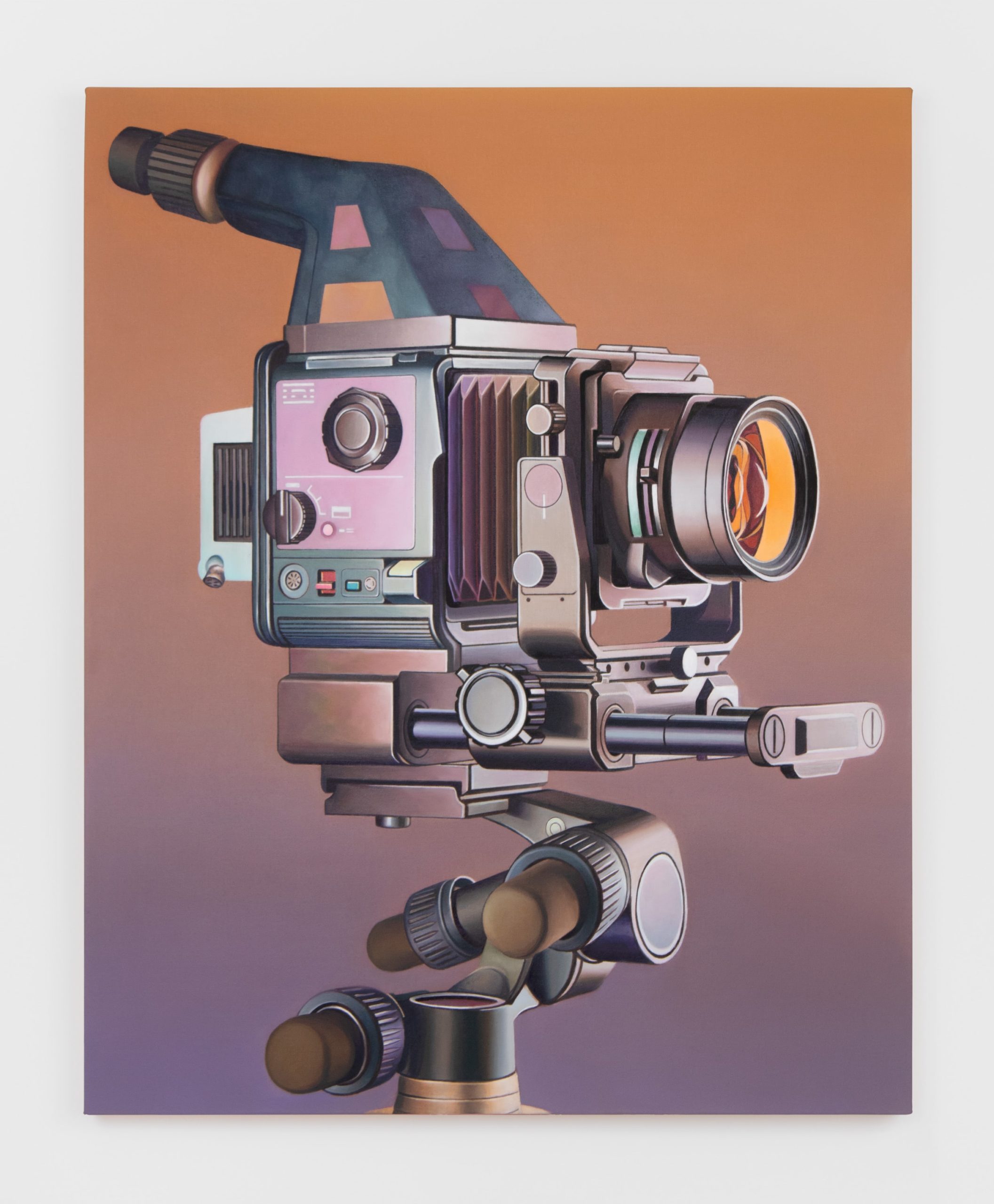
Chason Matthams, “Untitled (Fuji GX680, orange/purple),” 2022, Oil on linen over panel, 36 x 29 inches; courtesy of the artist and Magenta Plains.


